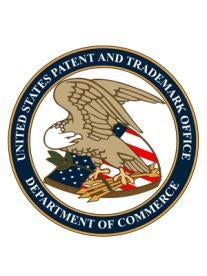On December 16, 2014, the USPTO issued a comprehensive interim Guidance document for examination of subject matter eligibility under 35 U.S.C. § 101. The new Guidance document supplements the June 2014 Preliminary Examination Instructions issued in view of Alice Corp. v. CLS Bank International (2014), and supersedes the March 2014 Procedure For Subject Matter Eligibility Analysis Of Claims Reciting Or Involving Laws Of Nature/Natural Principles, Natural Phenomena, And/Or Natural Products.
Two-step Analysis
Under the new Guidance document, subject matter eligibility under 35 U.S.C. § 101 is determined using a two-step process. First, in Step 1, the examiner determines whether a claim is directed to statutory subject matter, i.e., a process, machine, manufacture or composition of matter. Second, in Step 2A, the examiner determines whether the claim is directed to a judicial exception (i.e., a law of nature, a natural phenomenon, or an abstract idea). If it is, then, in Step 2B, the examiner also determines whether the claim amounts to significantly more than a judicial exception. The test for determining whether a claim is directed to a judicial exception (Step 2A) is separate from the analysis of whether the claim includes “significantly more” than the exception (Step 2B). In contrast to the March 2014 Guidance document, the claim will be found patent eligible without fur ther analysis if, under Step 2A, the examiner concludes the claim is not directed to a judicial exception.
Step 2A: Is the claim directed to a judicial exception?
In Step 2A, a claim is “directed to” a judicial exception if it recites (sets forth or describes) one. A nature-based product is a judicial exception if it has no “markedly different” characteristics as compared to its naturally occurring counterpart. This markedly different characteristics analysis is applied specifically, and only, to the nature-based product limitations in the claim.
The March 2014 analysis procedure required a structural difference between the nature-base product in the claim, and the product as naturally occurring. The new Guidance document recognizes that a nature-based product can be distinguished from the naturally occurring product based on markedly different characteristics that include not only the product’s structure, but also its function, and/or other proper ties. The following non-exhaustive list of characteristics to consider is mentioned:
-
biological or pharmacological functions or activities,
-
chemical and physical proper ties,
-
phenotype, including functional and structural characteristics, and
-
structure and form, whether chemical, genetic or physical.
If the nature-based product has no markedly different characteristics from its naturally occurring counterpart, then the examiner will conclude that the claim is directed to a judicially recognized exception and will be further examined under Step 2B.
Step 2B: Is the claim significantly more than the judicial exception?
If the claim is directed to a judicial exception, then, in Step 2B, the examiner weighs whether there are additional elements, or combination of elements, in the claim that are sufficient to ensure that the claim amounts to significantly more than the judicial exception. If it does, then the claim is patent eligible.
For the Step 2B analysis, it is important to consider the claim as whole. The new Guidance document notes that individual elements viewed on their own may not appear to add significantly more to the claim, but when combined may amount to significantly more than the exception.
Examples of additional claim limitations that may help to establish that the claim is “significantly more” than a judicial exception are provided. These include limitations directed to:
-
effecting a transformation or reduction of a particular article to a different state or thing,
-
adding a specific limitation other than what is well- understood, routine and conventional in the field, or adding unconventional steps that confine the claim to a particular useful application, and
-
other meaningful limitations beyond generally linking the use of the judicial exception to a particular technological environment.
The new Guidance document also provides examples of limitations that were found not to be sufficient to qualify the claim as being “significantly more” when recited in a claim with a judicial exception. These include:
-
appending well-understood, routine and conventional activities previously known to the industry, specified at a high level of generality, to the judicial exception,
-
adding insignificant extrasolution activity to the judicial exception, e.g., adding a mere data gathering step, and
-
generally linking the use of the judicial exception to a particular technological environment or field of use.
Additional Examples
In addition to the Sample Analyses included with the new Guidance document, the USPTO separately published 10 new examples applying the patent eligibility analysis to claims that recite nature-based products. These examples replace the ones provided with the March 2014 Guidance document. The examples cover a variety of process, manufacture and composition claims from the technical fields of chemical compositions, natural medicine, pharmaceuticals, purified proteins, genetically modified microorganisms, recombinant nucleic acid technology, antibodies, isolated cells, and food products.
This is a rapidly changing area of patent law. The Guidance document is not legally binding. Applicants can challenge the USPTO in its implementation.
The USPTO will host a public forum at its Alexandria campus on January 21, 2014 to discuss the new Guidance document. Requests for attendance must be submitted electronically by January 9, 2014.





 i
i


